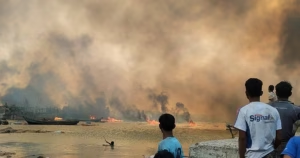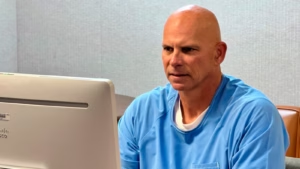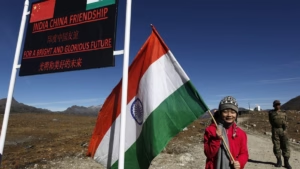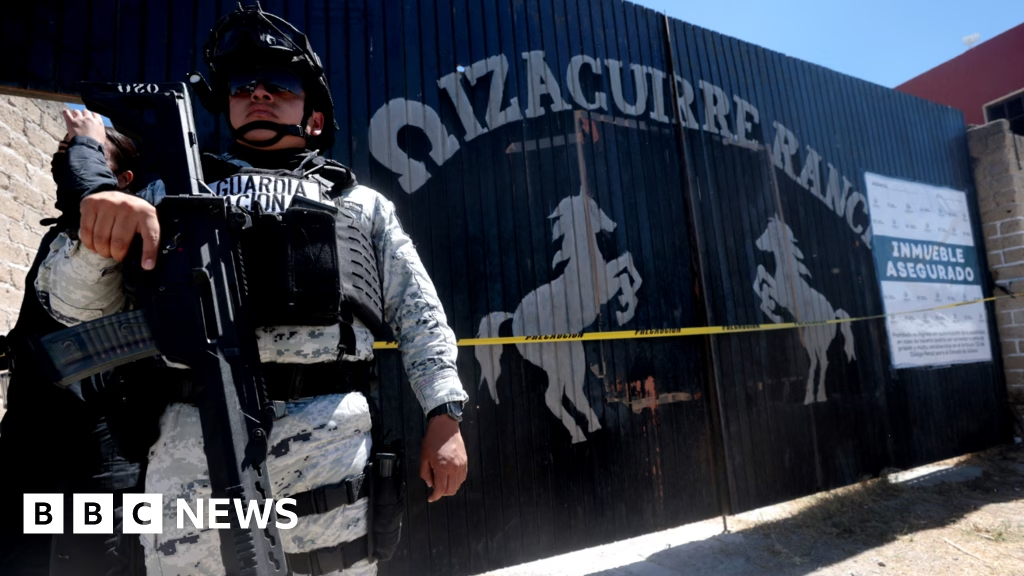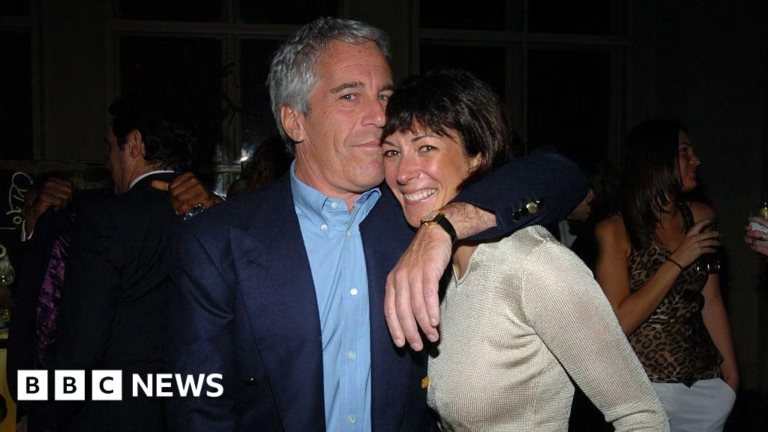
Getty Images
Yet what lies behind the black iron doors is allegedly evidence of some of Mexico’s worst drug cartel violence of recent times.
Following a tip-off about the possible location of a mass grave, an activist group of relatives of some of Mexico’s thousands of disappeared people went to the ranch, hoping to find some sign of their missing loved ones.
What they found was far worse: 200 pairs of shoes, hundreds of items of clothing, scores of suitcases and rucksacks, discarded after the owners themselves were apparently disposed of.
The site was used, the activists claim, by the New Generation Jalisco Cartel (CJNG) for the forced recruitment and training of their foot-soldiers, and for torturing their victims and cremating their bodies.
“There were children’s toys in there,” says Luz Toscano, a member of the Buscadores Guerreros de Jalisco Collective.
Getty Images
“They’d see the shoes and say: ‘those look like the ones my missing relative was wearing when they disappeared’.”
Toscano believes the authorities must now go through all the personal effects piece by piece and make them available to the families for closer inspection.
While at the time they made 10 arrests and released two hostages, they either didn’t find or didn’t reveal any evidence of the apparent magnitude of violence carried out there.
While the full picture is still to come over what action, if any, was taken by the municipal and state authorities after last year’s operation, critics and victims’ families openly accuse them of complicity with the cartels in Jalisco.
State Governor Pablo Lemus responded in a video message.
His administration was cooperating fully with the federal authorities, he said, and insisted that “no one in Jalisco is washing their hands” of the case.
Getty Images
Given the serious doubts about the actions of the local police and the state attorney general’s office, she has ordered federal investigators to take charge of the case.
She urged people not to jump to conclusions while the investigation is ongoing.
“It is important is to make the investigation before we come to any conclusions,” she said in her morning press briefing earlier this week.
“What did they find at the site? Before anything else, we must hear from the State Attorney General’s office, which is the agency responsible, and they will let the entire country know what they have found.”
Whether most Mexicans will believe the official version of events, however, is another question.
Getty Images
Whatever they conclude, though, the media in Mexico is calling the Izaguirre Ranch an “extermination” site.
Meanwhile, more search teams of victims’ relatives have come to the state capital, Guadalajara, ahead of a protest march this weekend to urge the authorities to do more to find Mexico’s missing people.
Rosario Magaña was among them. She is the mother of Carlos Amador Magaña, who disappeared in June 2017. He was just 19 years old.
Getty Images
“It’s a very, very slow process when it comes to the state attorney general’s office and the investigation.”
“I still have faith and hope of finding him”, she stressed. “But I’m in a situation which doesn’t move forward, and it’s discouraging.”
As she left a church service for the unknown victims at the ranch in Teuchitlán, Rosario said the allegations of mistakes, oversight, collusion and negligence in the case only underlined the uphill struggle mothers like her have faced for years in obtaining answers to the most basic of questions about their children’s whereabouts.
“There are so many mass graves in Jalisco, so many cartel safehouses, the authorities know the CJNG’s modus operandi. So, what is the government doing?” she asks rhetorically.
